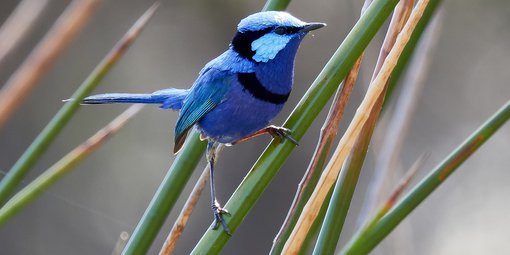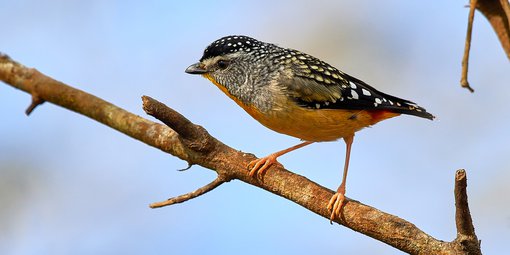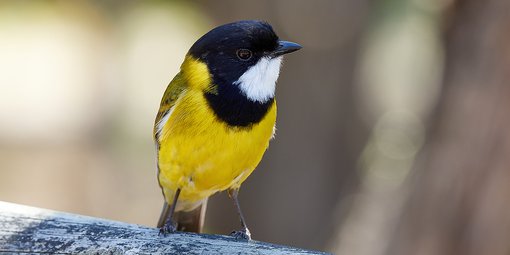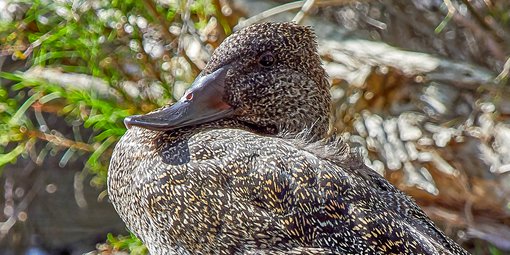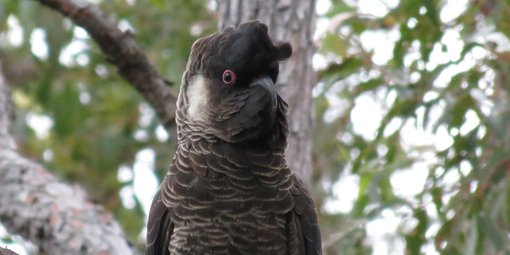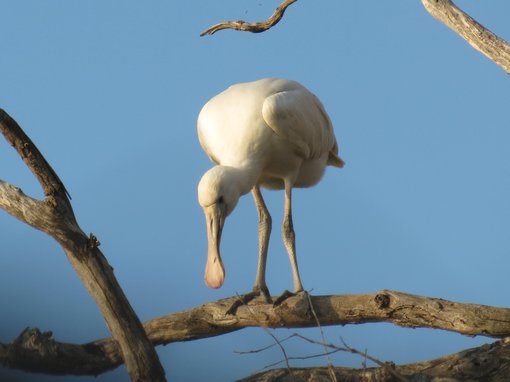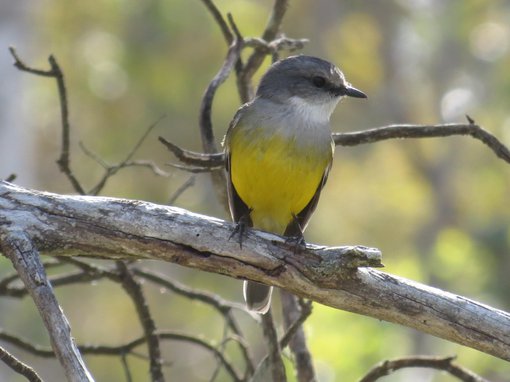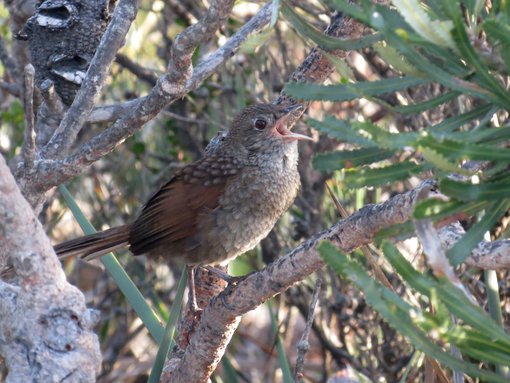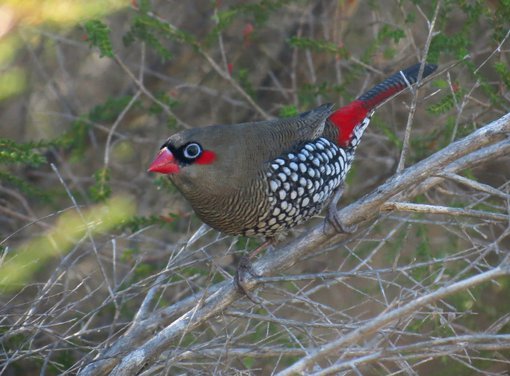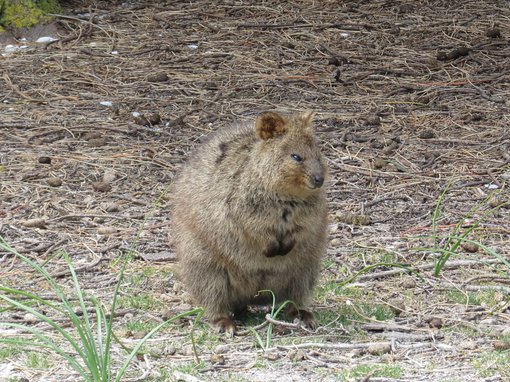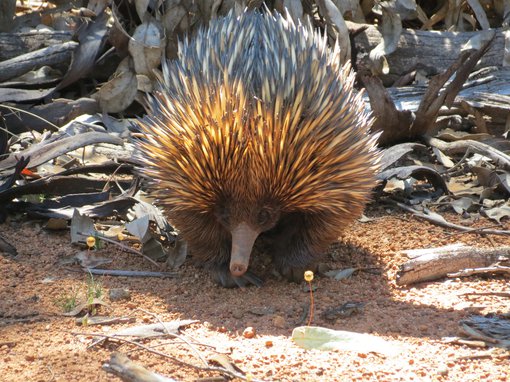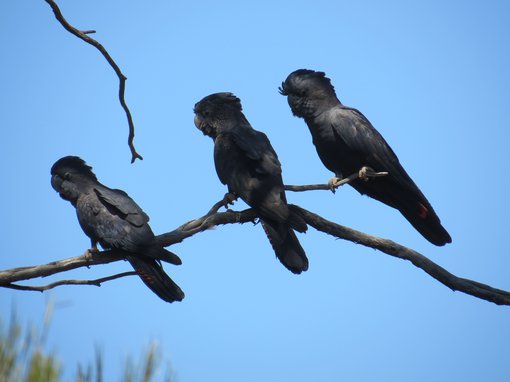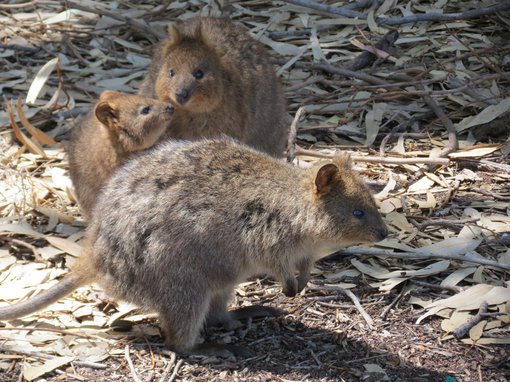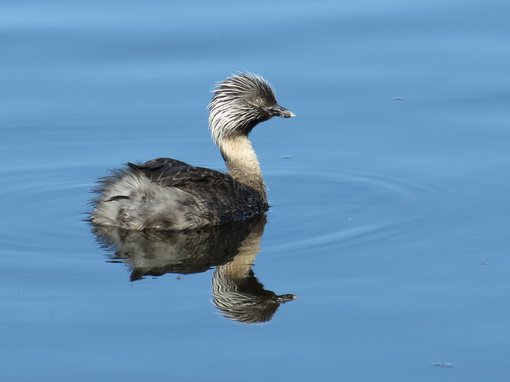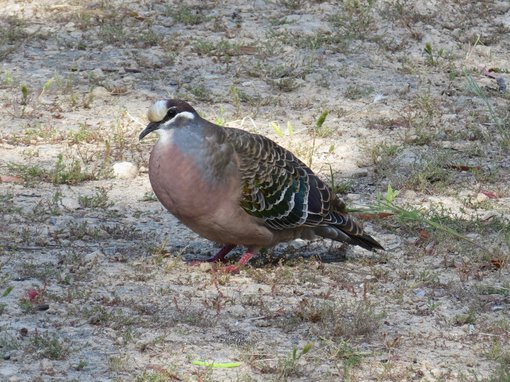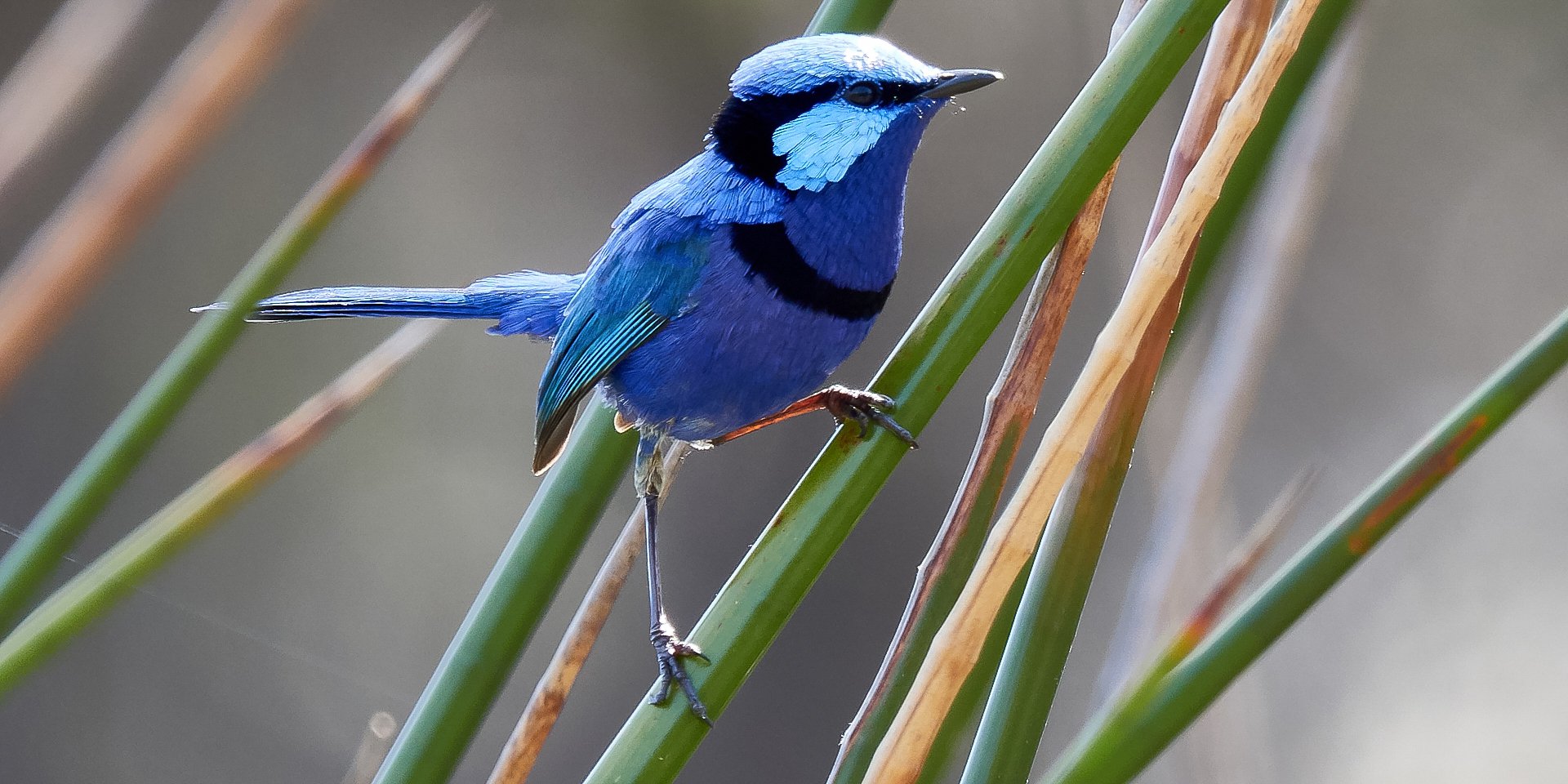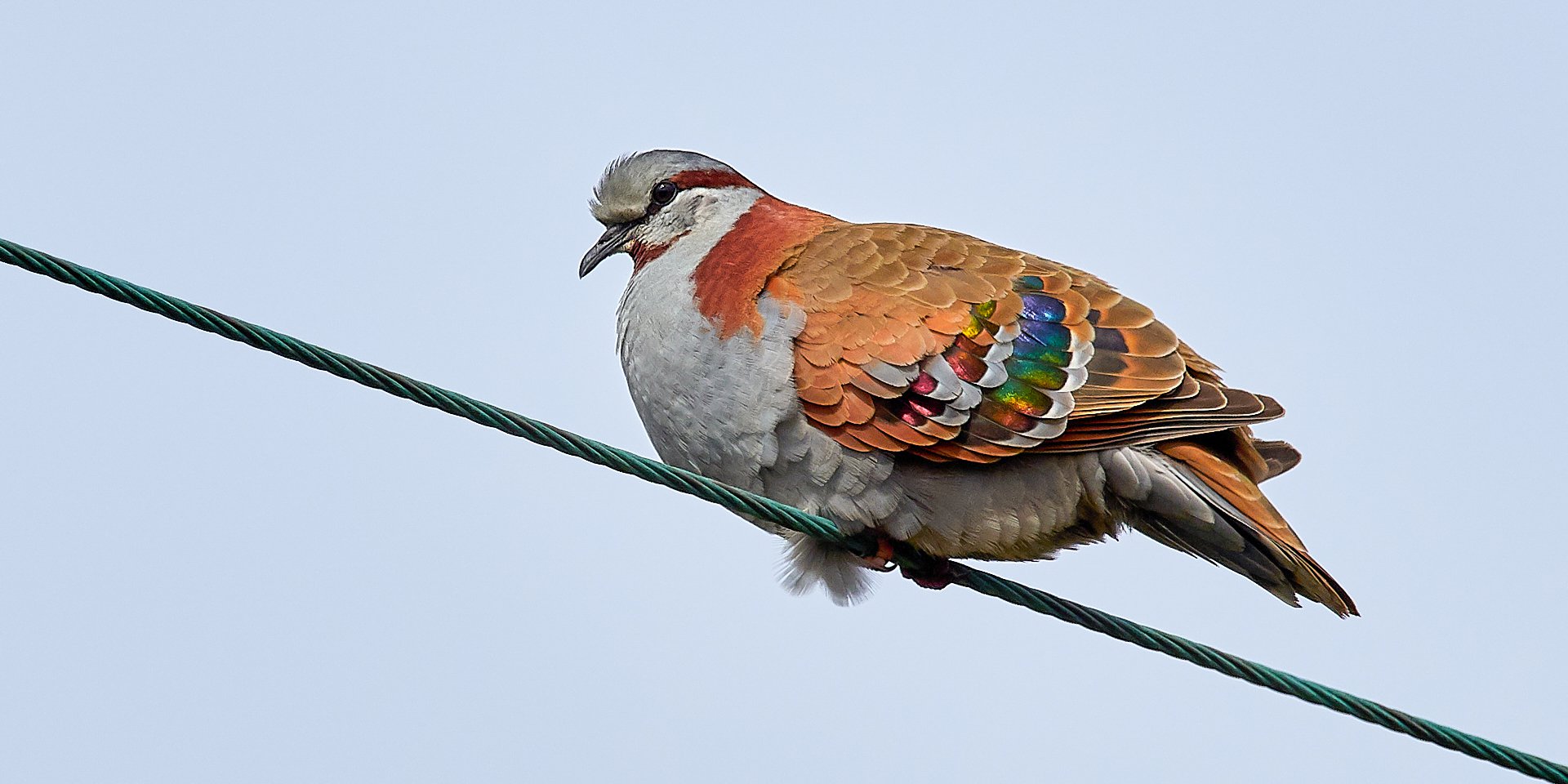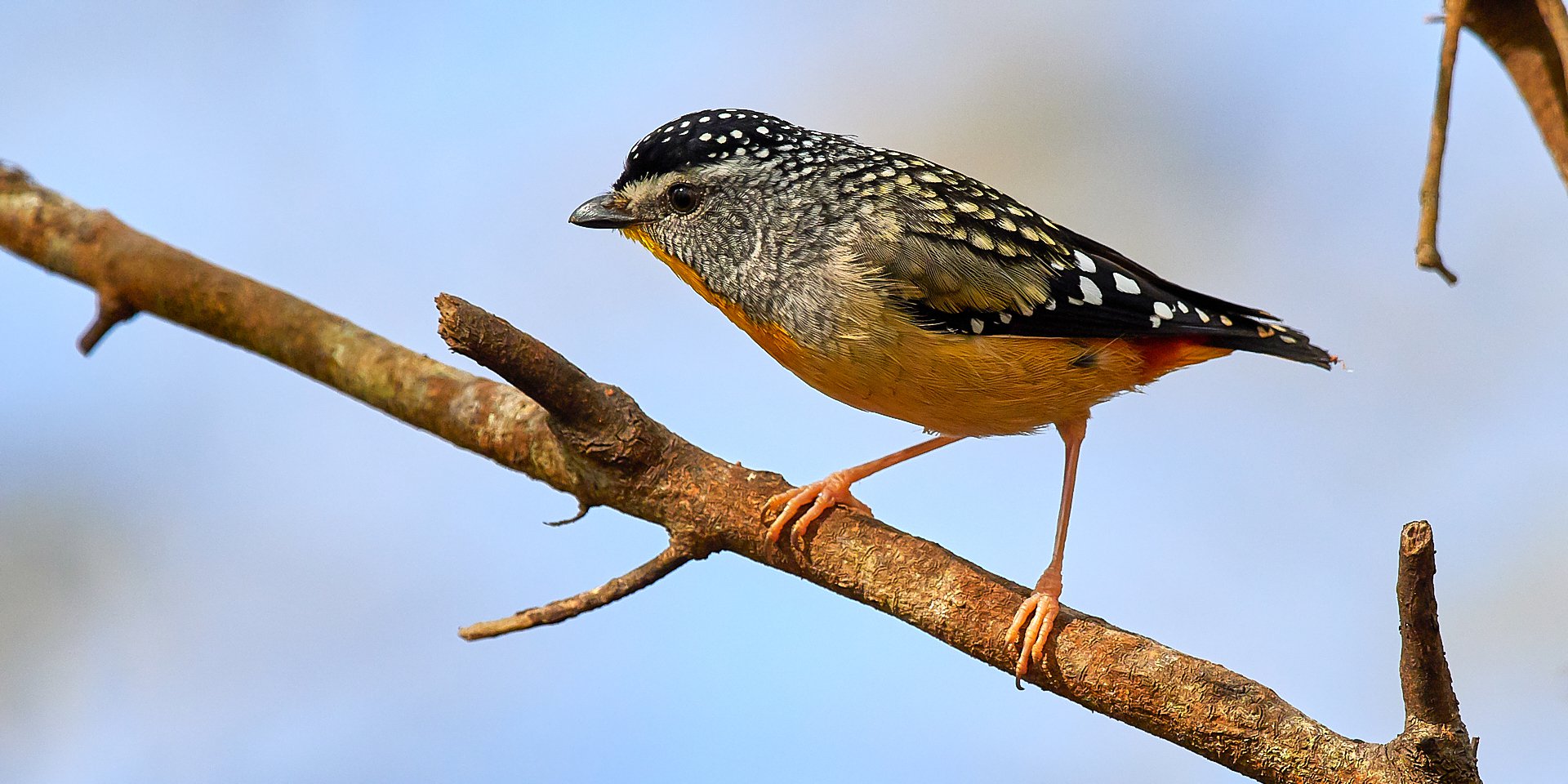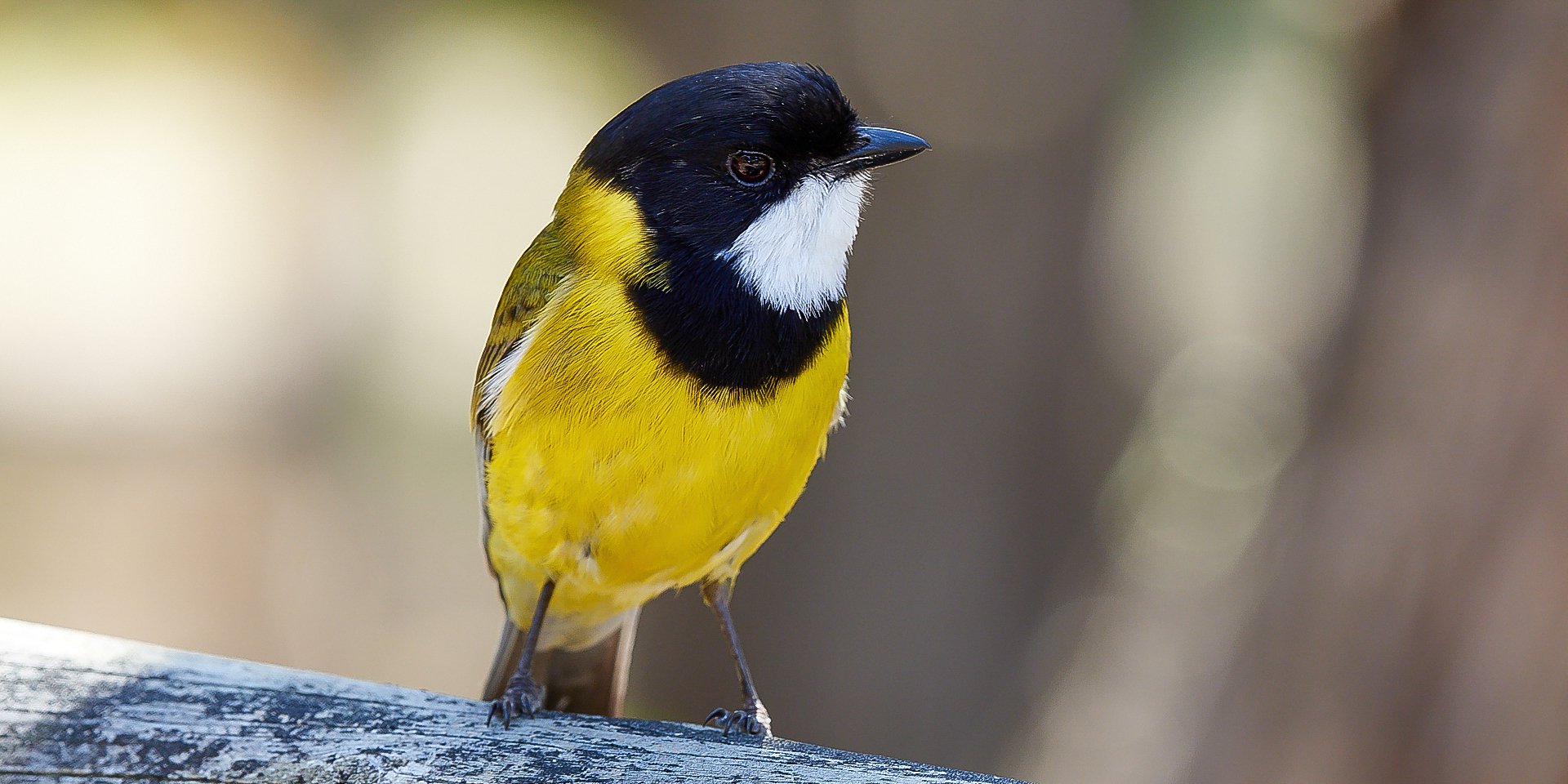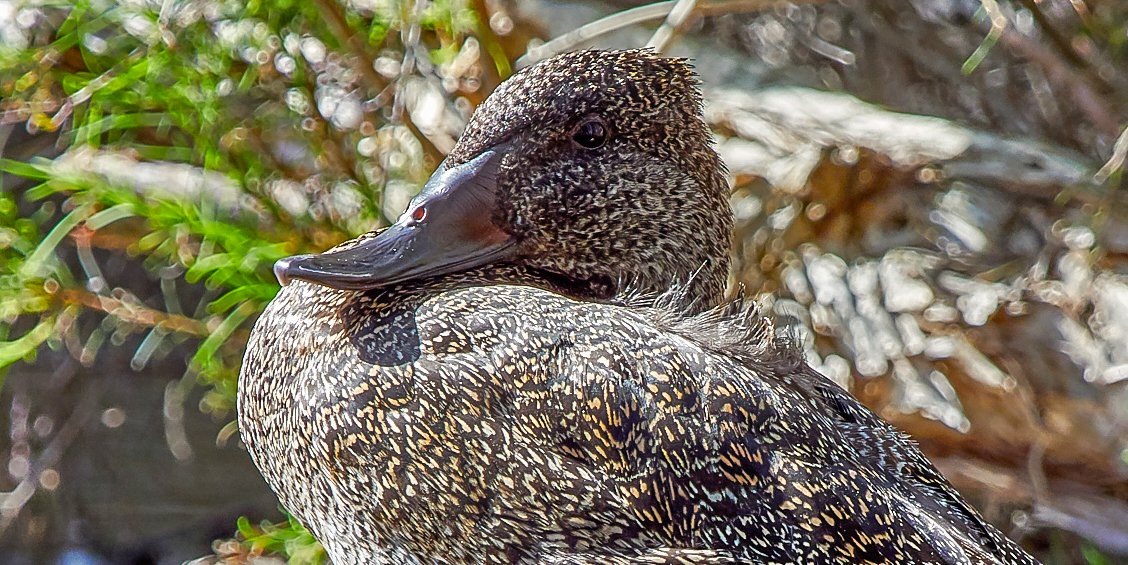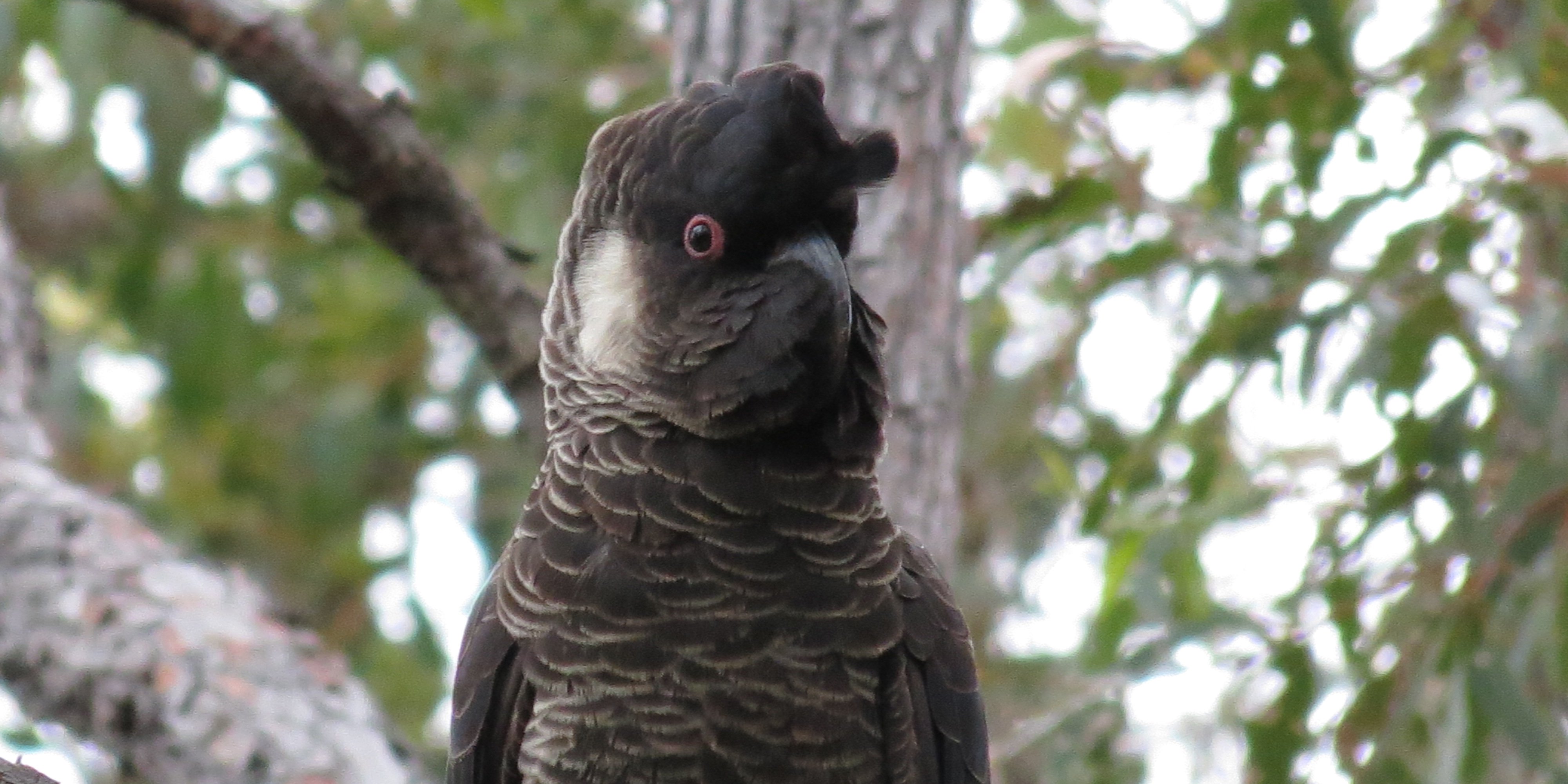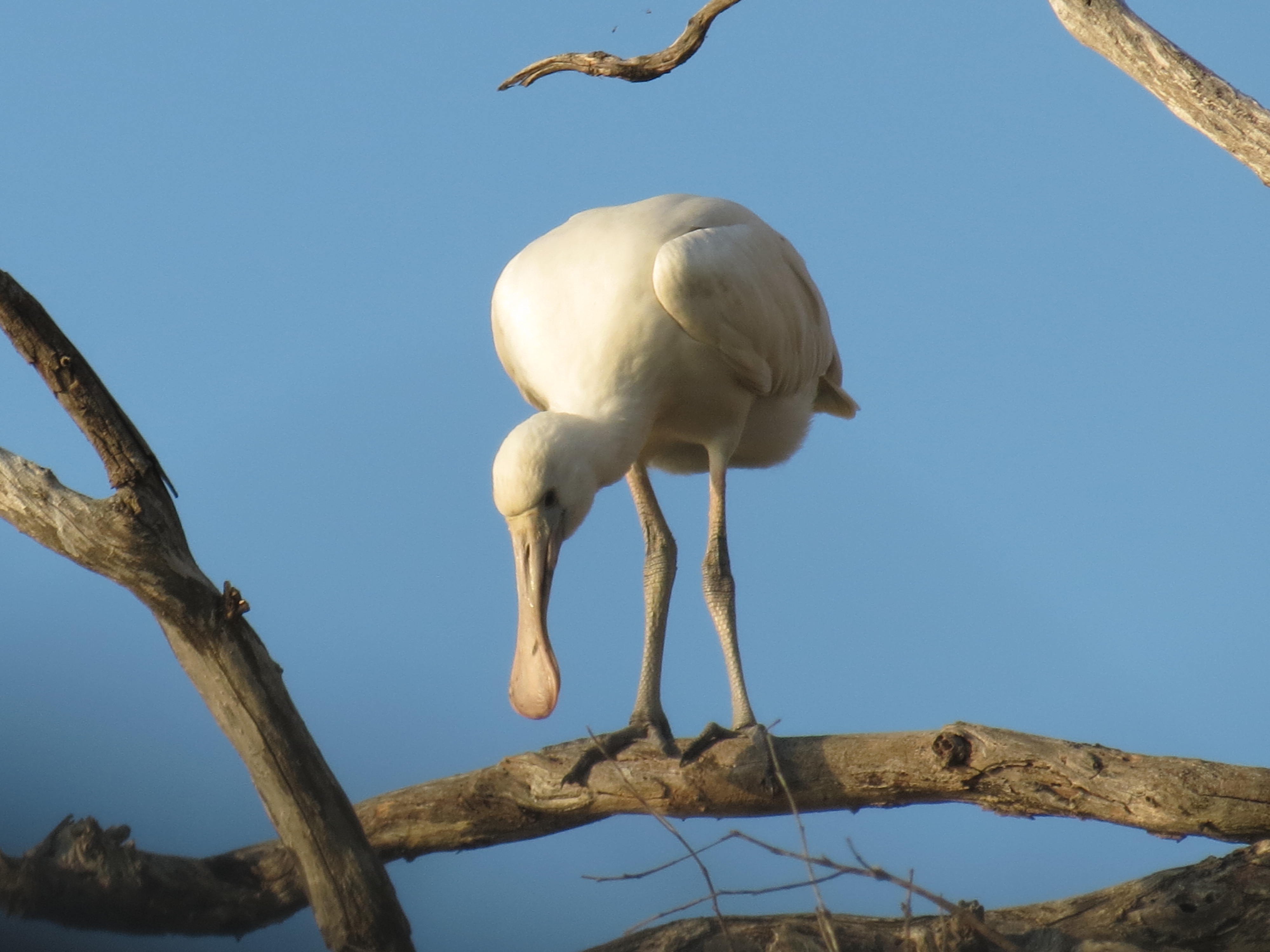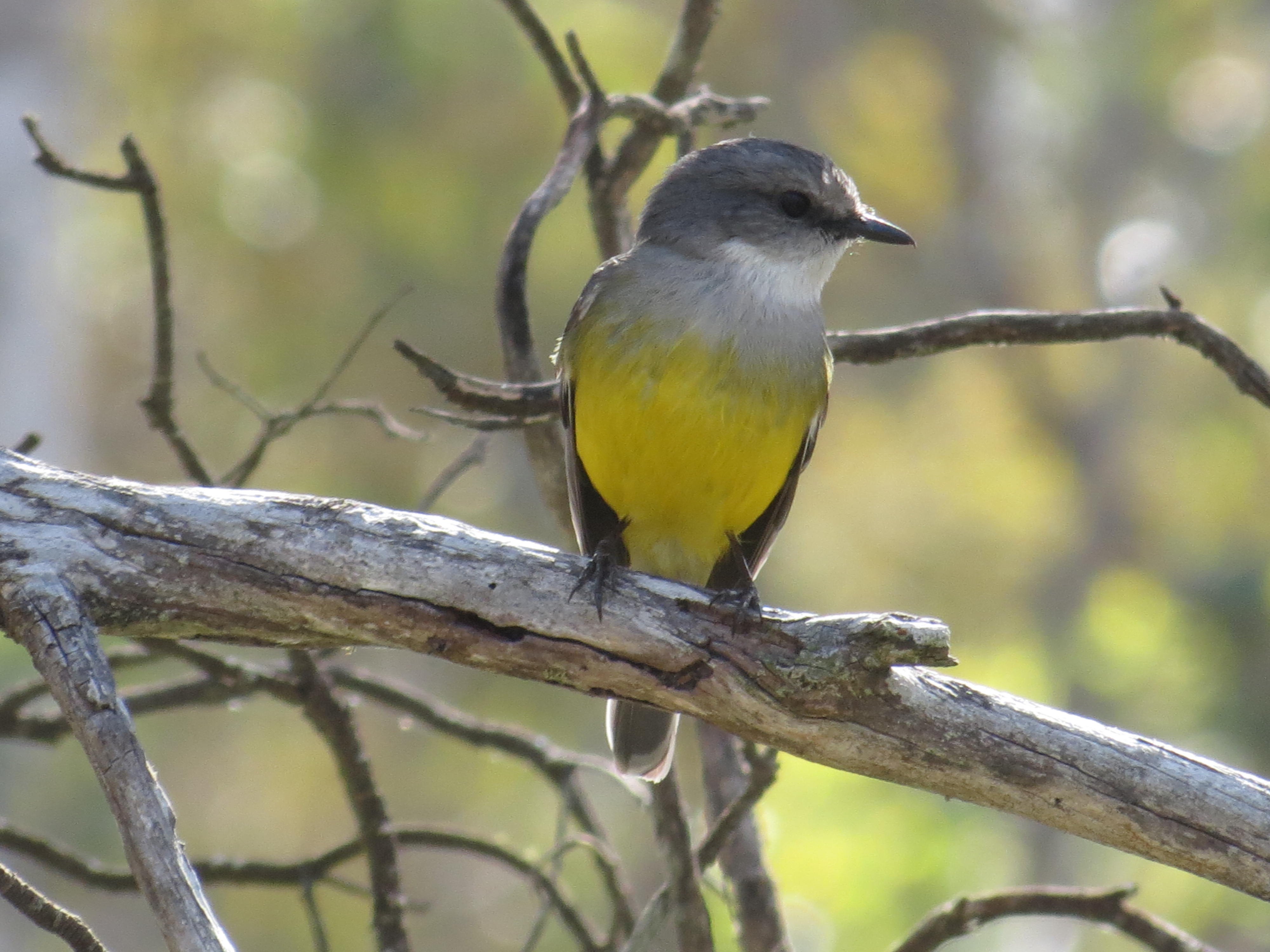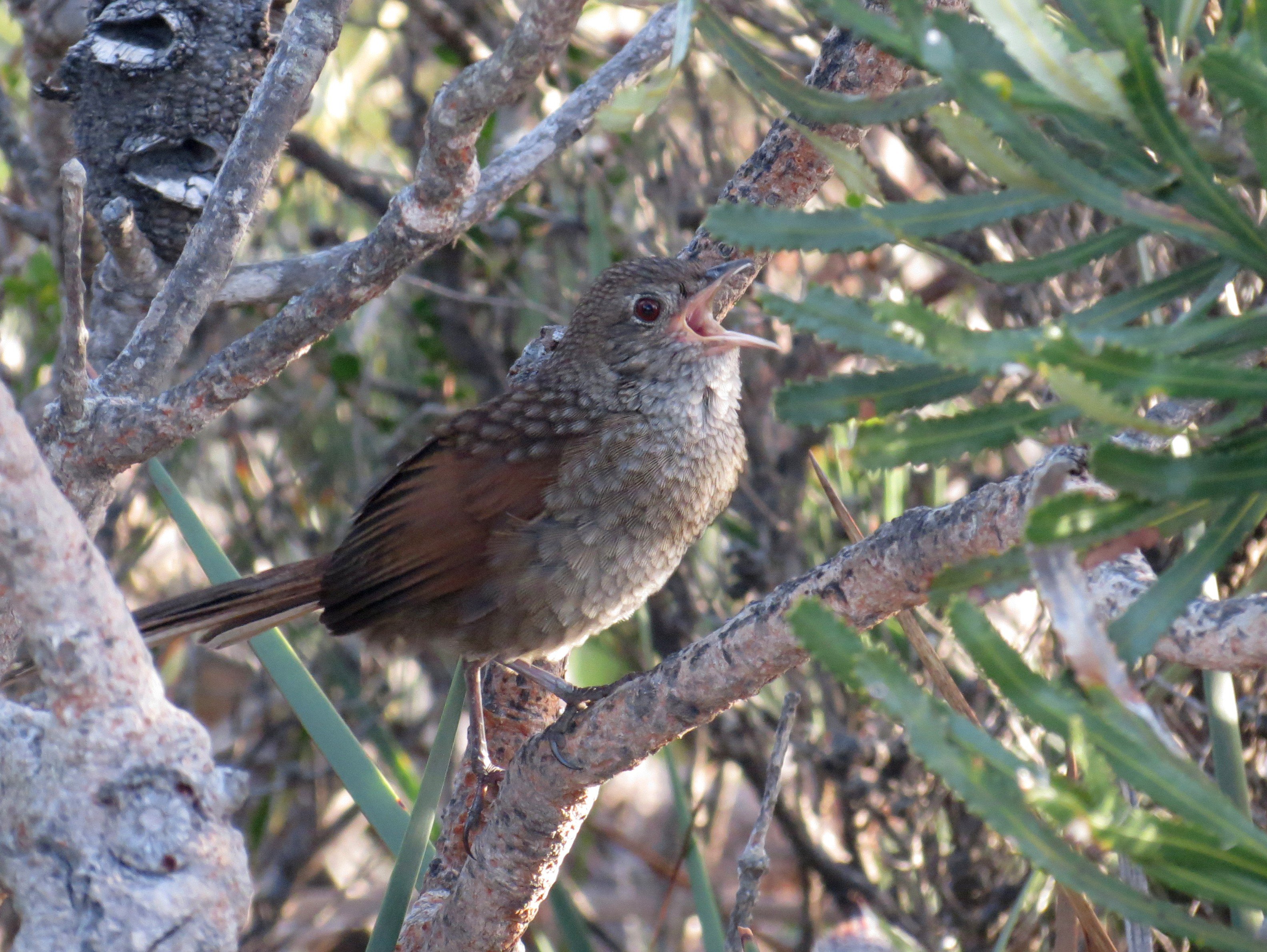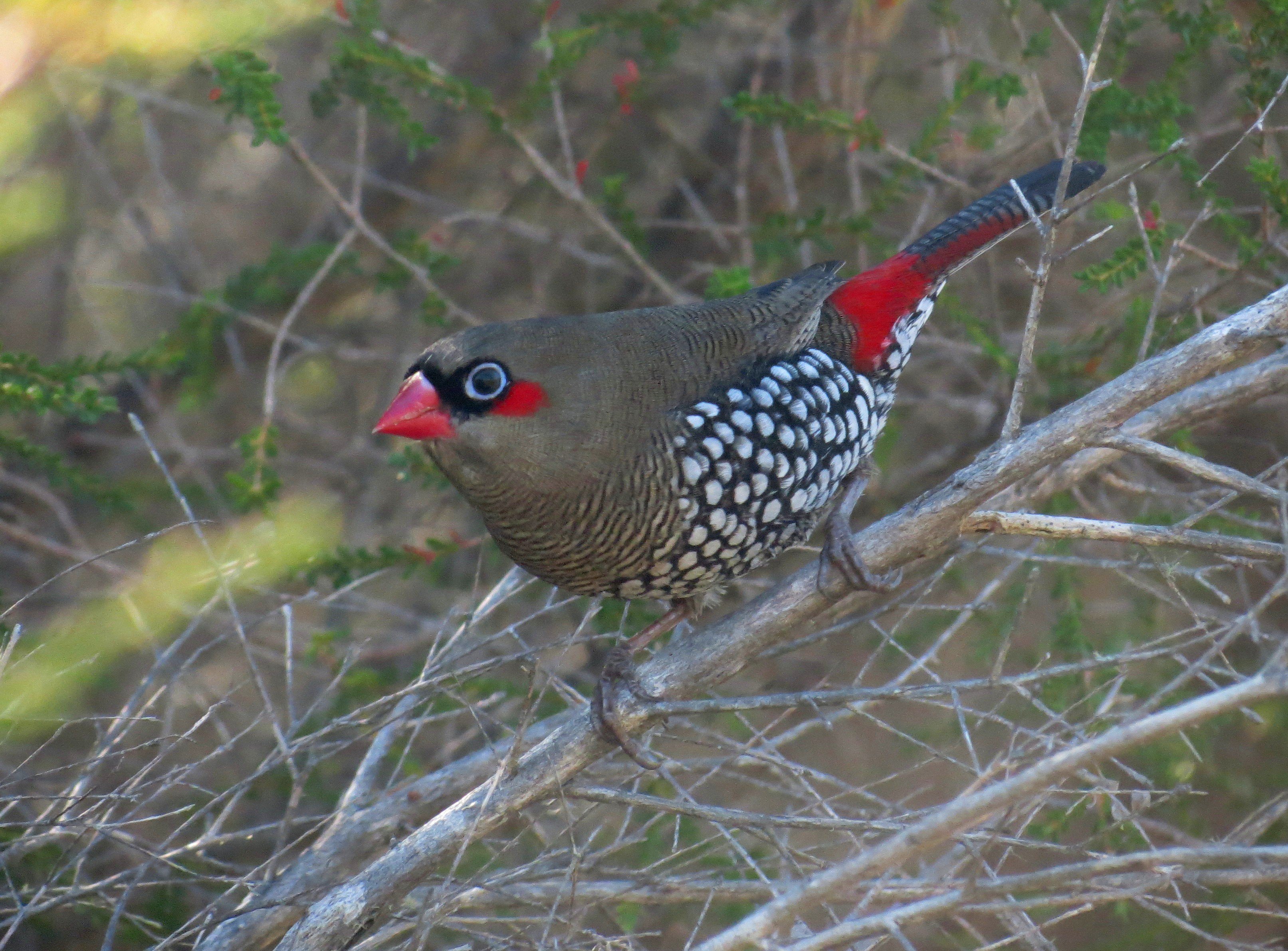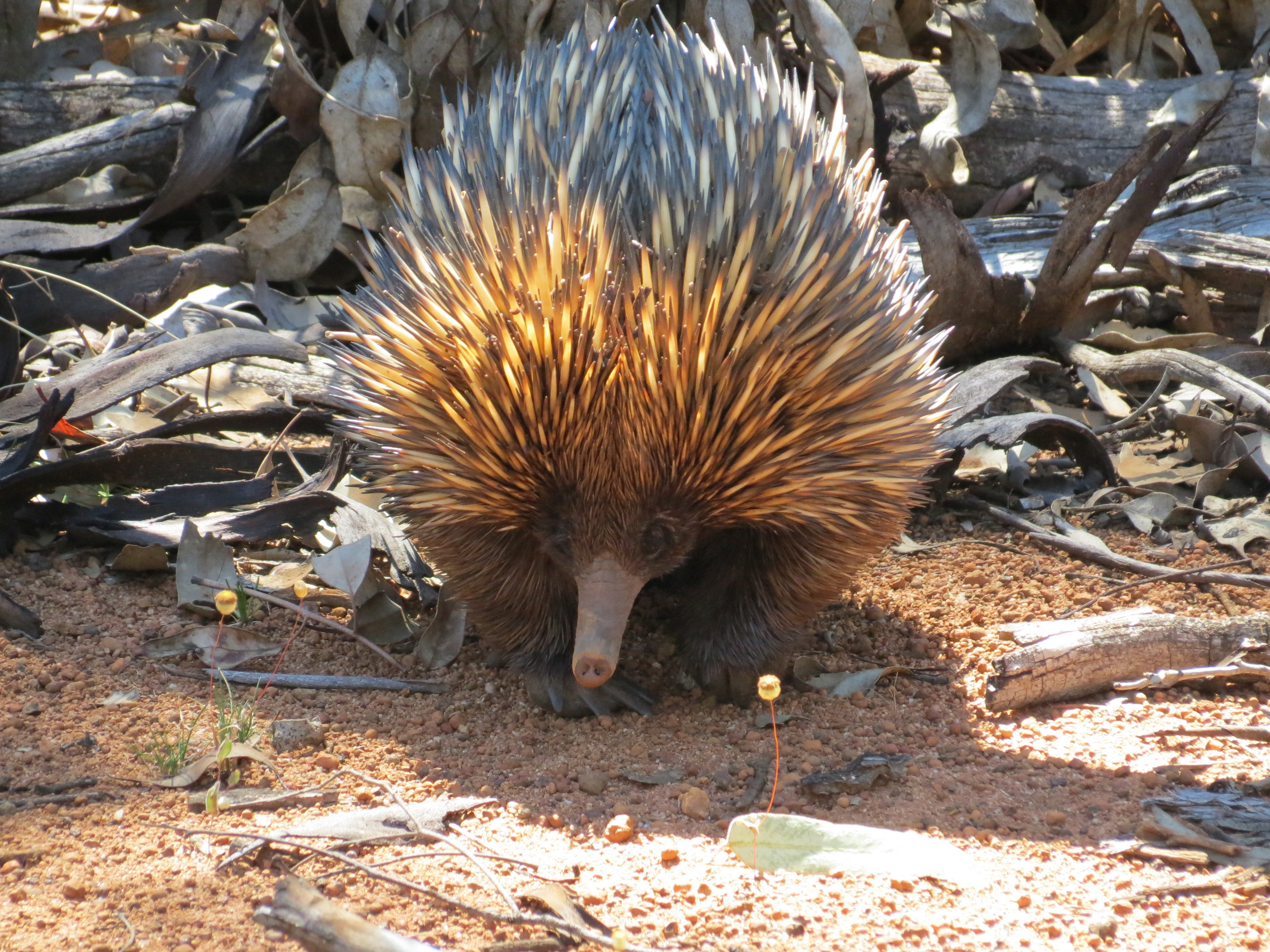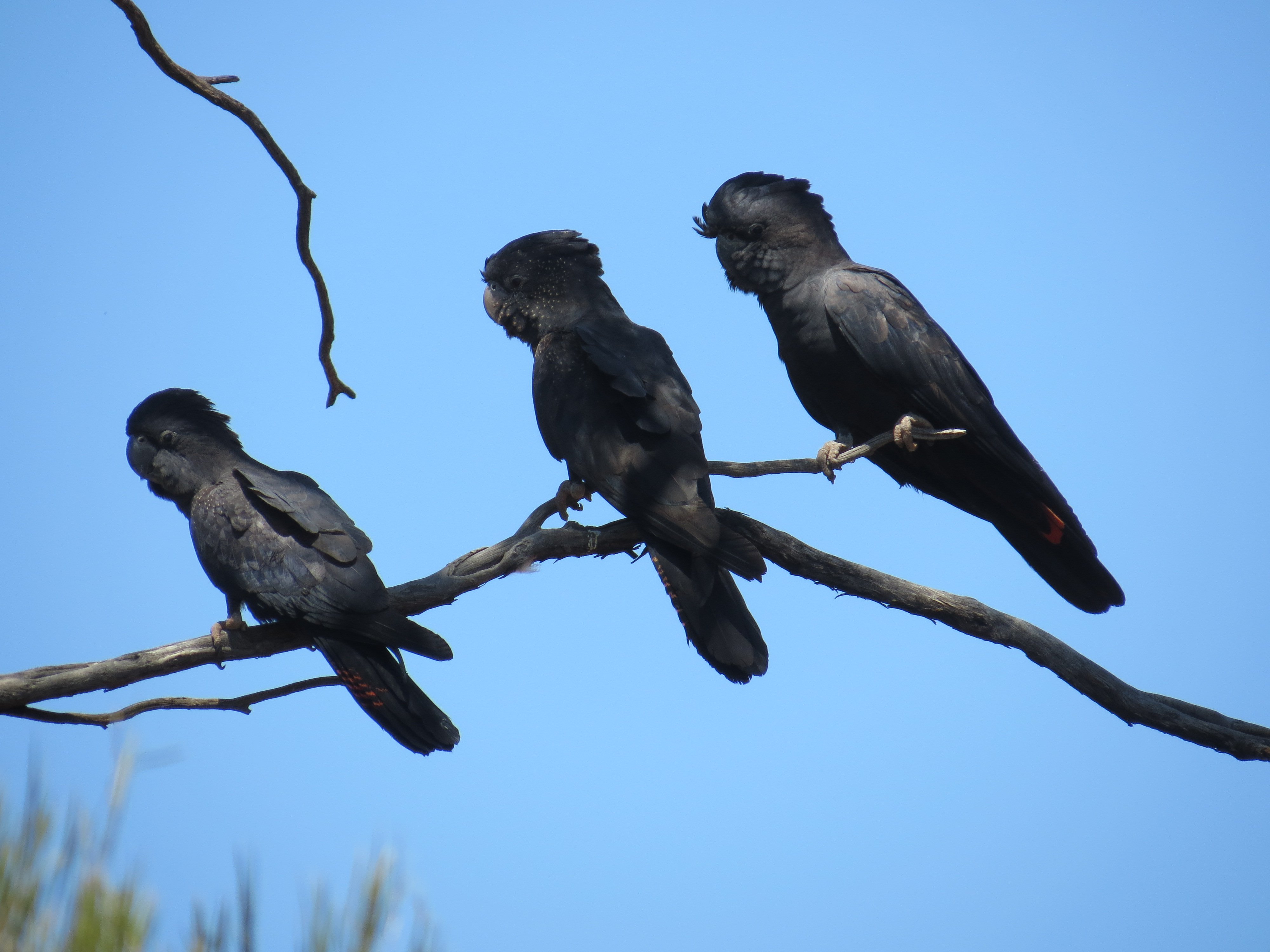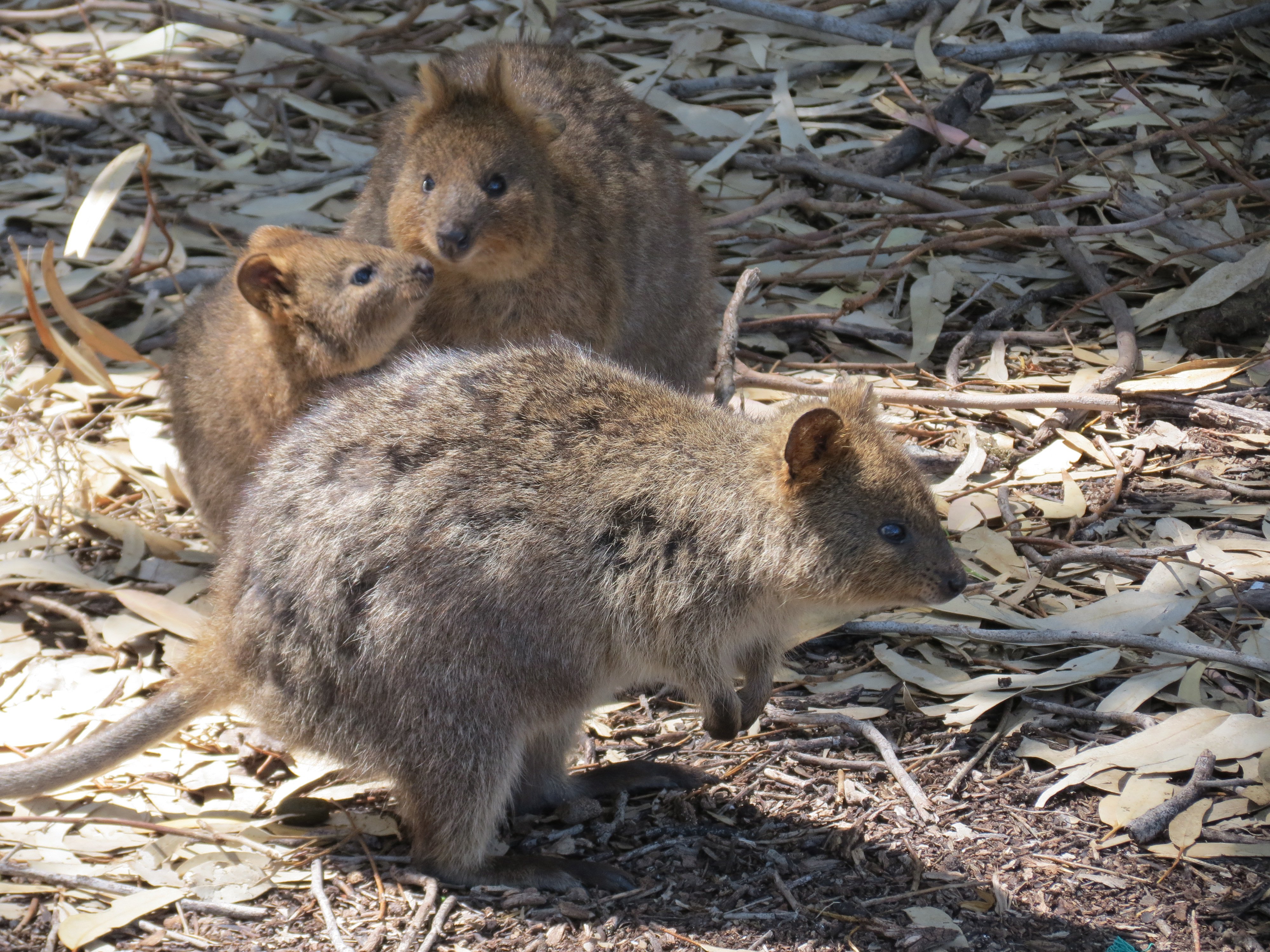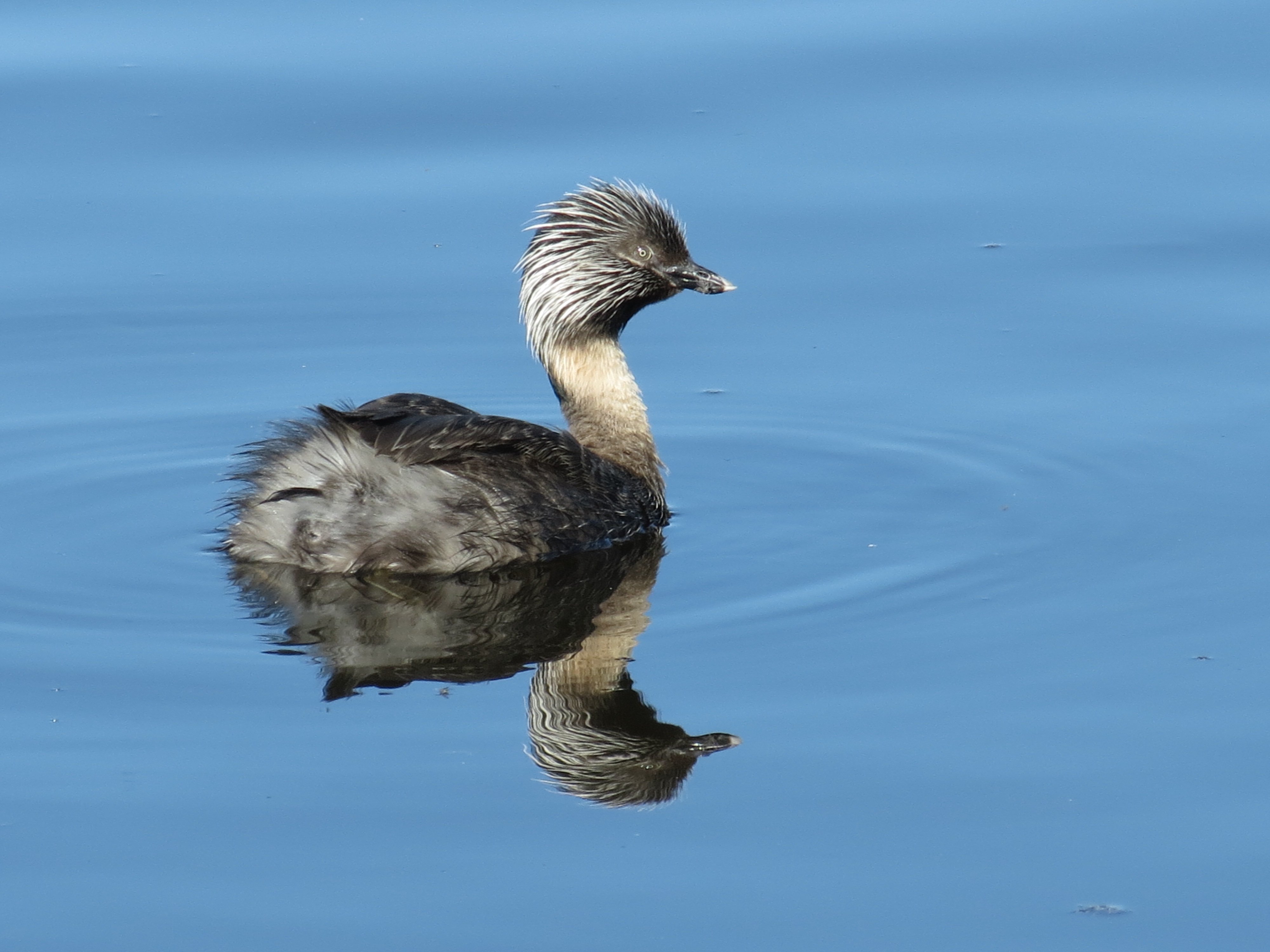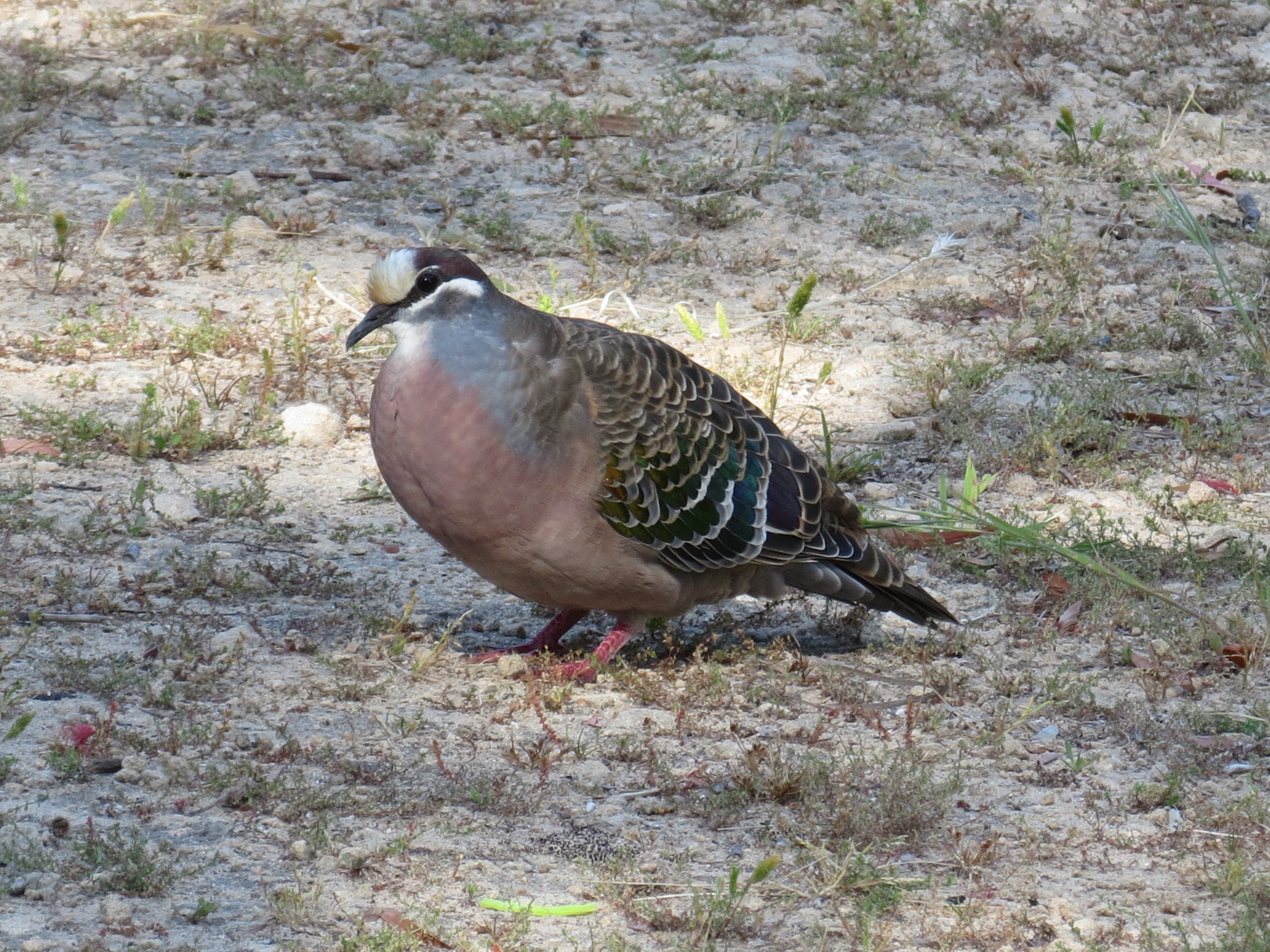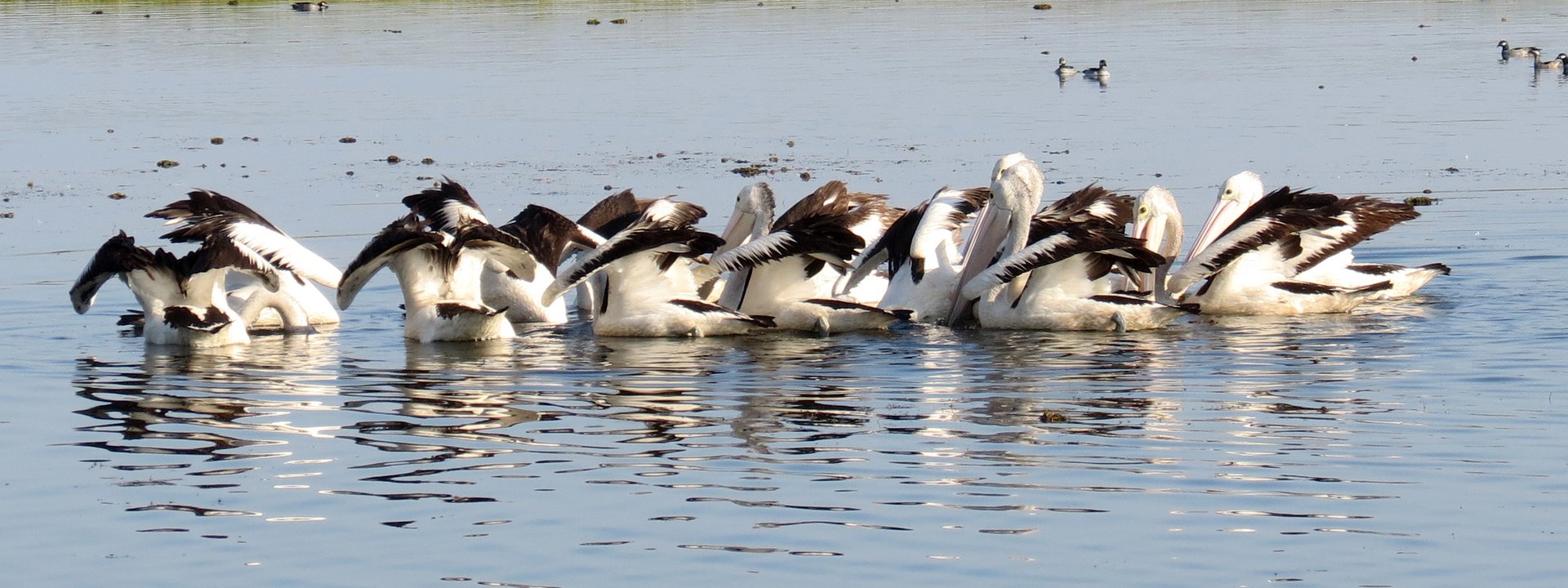Australia
Perth and Wild Southwest
A 17-day, small group birdwatching tour to Western Australia
Travel on Limosa’s birding tour to Western Australia with our Aussie specialist Peter Taylor, whose home is in the tall timber country south of Perth and which is where we begin our tour. Focusing on the continent's wild Southwest, this is a trip which will open your eyes to the long list of Australian endemic birds and with Baudin’s Black Cockatoo, Gilbert's Honeyeater and Noisy Scrubbird among 17 species that are unique to Western ‘Oz’. Our visit is timed to coincide with WA's spectacular displays of spring wildflowers (which are widely acclaimed to be amongst the finest in the world) while two great boat trips and encounters with some of Australia’s unique mammals complete a wonderful holiday Down Under.
Tour Dates & Prices
Tour Highlights
- New and improved itinerary from Perth to the Southern Ocean and back
- A host of Australian endemic birds: from emus and cockatoos to wattlebirds and fairywrens
- Plus looking for many of the species which are unique to Western Australia
- Red-capped Parrot, Western Corella and the ‘impossible to see' Noisy Scrubbird
- Boat trips to Rottnest Island and the Recherche Archipelago for seabirds and cetaceans
- Mammals could include Australian Sealion, Quokka, Echidna, Numbat and Red Kangaroo
- Spectacular spring floral displays in one of the world's botanical hotspots
- Small group tour expertly led by Limosa’s own resident Australian bird guide, Peter Taylor
Outline Itinerary
We depart the UK on an overnight flight bound for Perth
Arrival in Perth (Day 2) and transfer to our comfortable hotel. We visit King’s Park and take a cruise offshore to Rottnest Island. Perth (2 nights)
We visit Herdsman Lake, then travel southeast through the Darling Ranges to the Dryandra Woodlands. Night Narrogin.
From Dryandra, we head south into the ‘Tall Timber Country’. Night Pemberton
We head east and pass through the Stirling Ranges then south to the coastal heathlands at Cheynes Beach, where we try for Noisy Scrub-bird and other specialities in the Waychinicup Nature Reserve. Cheynes Beach (2 nights)
We visit the Mallee country and Fitzgerald River National Park. Night Hopetoun
We explore the Esperance Lakes region and enjoy a cruise to Woody Island. Esperance (2 nights)
We venture inland to the arid zone and explore Rowles Lagoon and Goongarrie National Parks. Kalgoorlie (3 nights)
We head westwards to Sandford Rocks and Merredin Peak Nature Reserve. Night Merredin
We return full circle to Perth. Final night Perth
After some final birding around Perth, departure from Perth on an overnight flight to the UK
Arrival in the UK
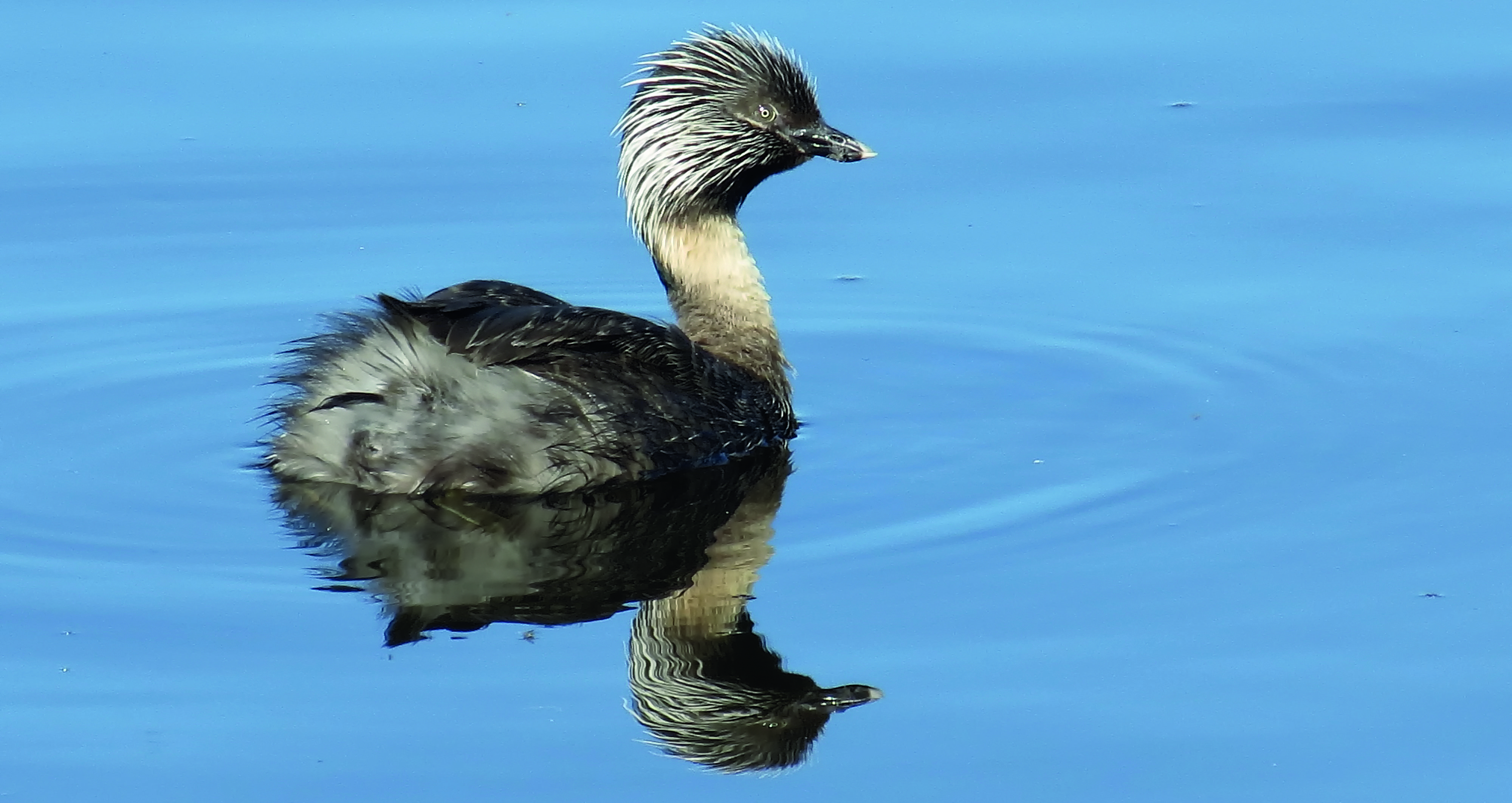
Isolated from the rest of the world's landmasses for over 60 million years, evolution in Australia has taken a very separate path. Whilst the continent’s two mammal groups, the kangaroos, wallabies and other marsupials, plus egg-laying monotremes such as the Duck-billed Platypus, are rightly famous, just as remarkable is that almost half of Australia’s regular bird species are found nowhere else. Indeed, Australia has a greater proportion of endemic birds than any other country in the world!
Our birdwatching tour to Western Australia is a classic, focusing on the wild and stunningly diverse southwestern corner of this huge island continent. It is a region that is not only blessed with a splendid array of endemic birds but which in Spring (when we visit) also boasts some of the finest floral displays anywhere in the world.
Our journey begins in the state capital Perth with a cruise to the Indian Ocean island of Rottnest which is alive with the calls of Western Gerygones and Singing Honeyeaters and home to a rather curious marsupial, the Quokka. In beautiful King’s Park, overlooking the broad reaches of Perth’s famous Swan River, we should encounter more Australian endemic birds including raucous Carnaby’s (Short-billed) Black Cockatoos and shrieking Australian Ringnecks.
Entering the temperate eucalypt forests of the Darling Ranges, we will watch out for two brilliantly coloured Western endemics: Red-capped Parrot and Western Rosella, whilst in the scenic woodlands of Dryandra, we will search for gorgeous Blue-breasted Fairywrens and Rainbow Bee-eaters. With luck, we might also encounter the peculiar Echidna or even catch sight of the unique Numbat, Western Australia’s faunal emblem.
Whilst exploring the region’s tall karri forests, we will search for Red-winged Fairywrens and Red-eared Firetails while Baudin’s (Long-billed) Black Cockatoos screech overhead.
Moving on to the wetlands of Lake Muir, we should find the geographically isolated race of Western Corella and, in the fantastic botanical diversity of the Stirling Ranges, Western Spinebill and Western Wattlebird. In the coastal heathlands on the south coast, some of our time will be spent looking for the rare, extremely localised and ultra-elusive trio of Western Australia endemics: Noisy Scrubbird, Western Bristlebird and Black-throated Whipbird.
Along the rugged south coast, we will also explore the islands of the Recherche Archipelago for an array of seabirds and also hopefully see Humpback and Southern Right Whales.
Continuing north to Kalgoorlie and the arid woodlands of the Goldfields region, there should be carpets of Everlasting Daisies and a myriad of other flowers which attract masses of Spiny-cheeked, White-fronted and Brown-headed Honeyeaters, along with Red-backed Kingfishers and Zebra Finches.
Heading westwards, we traverse the vast Western Australian wheatbelt with its scattered granite outcrops and sandplain heaths where the high-pitched seeps of Chestnut-rumped Thornbills and Southern Whitefaces can be heard. We then head back over the Darling Scarp before returning full circle to Perth for a final evening and a fitting conclusion to this wonderful tour!
Our resident Aussie guide Peter Taylor joined the Limosa team in 2008 and has since led all of our Australia tours. He has lived in the tall timber country of Western Australia for over twenty years and knows the birds and wildlife of this region with an intimacy few can match.
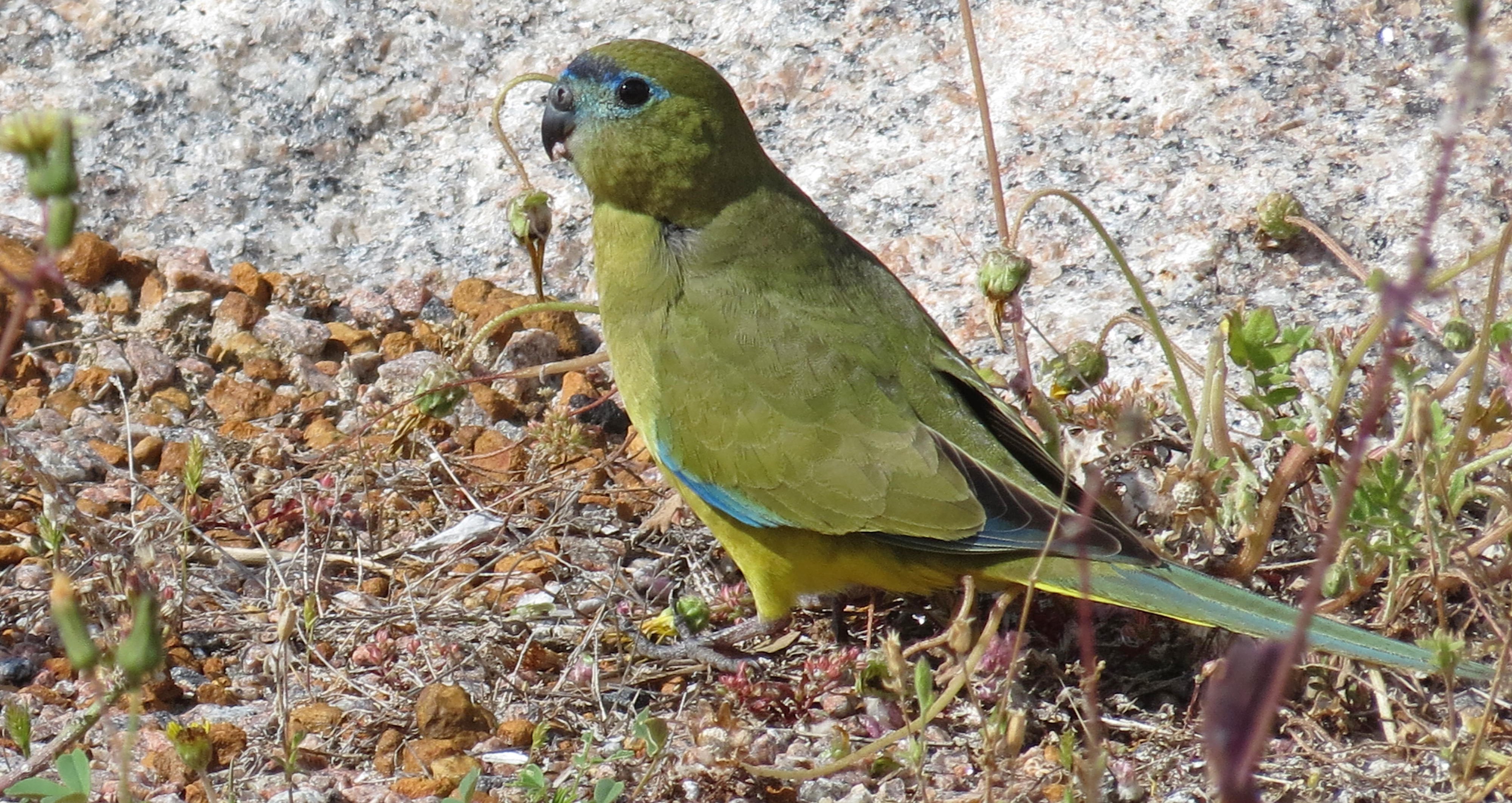
If you wish, this tour can easily be incorporated into your own private visit to Australia. For those who would prefer to travel out early and rest up a little ahead of the tour, or make their own arrangements to stopover in Australia or elsewhere before or after our tour, our recommended Flight Agent can organise your flights out / back on almost any day you choose. Departures from some regional airport are also possible. Please ask for details at time of booking.
Day 1
FLY UK TO PERTH
Our birdwatching tour commences with a flight to Perth, the state capital of Western Australia.
Days 2 – 3
PERTH: ROTTNEST ISLAND CRUISE AND KINGS PARK
Our flight arrives in Perth on Day 2, where Peter will be waiting to welcome you. We transfer to a comfortable hotel, where we plan to stay for two nights.
Situated on the shores of the Indian Ocean, at the southwestern corner of the great Australian continent, Perth is one of the most remote cities in the world (second only to Honolulu in terms of distance from its nearest neighbour). Due to its geographic isolation, the temperate southwest corner of Western Australia also boasts an abundance of species that are found nowhere else in the world including 17 endemic species of birds and some of the finest displays of wildflowers anywhere on earth.
Overlooking the broad blue waters of the Swan River and within walking distance of Perth’s bustling city centre, King's Park is the perfect place to start the mainland component of our birdwatching tour. Set aside as a reserve as long ago as 1872, the park and botanic gardens extend over 1000 acres, more than half of which is remnant eucalypt woodland. The water features and landscaped gardens are a major feature of the park, which is home to more than 80 species of birds and 300 different species of plants. Many cockatoos, parrots and honeyeaters have been recorded here and we should soon be enjoying our first pink-and-grey Galahs, noisy Australian Ringnecks and impressive Carnaby’s Black Cockatoos, a Western Australian endemic, along with White-cheeked and New Holland Honeyeaters.
Gently easing into the first full day of the tour, we will begin with a leisurely cruise over to Rottnest Island, named by early Dutch explorers after the native Quokka, a small marsupial that lives there. Lying some 18km off the coast at Perth, Rottnest is a good place to find Rock Parrot and the striking Red-capped Robin, as well as Western Gerygone, Singing Honeyeater and White-fronted Chat. Eastern Ospreys find the island’s rugged coastline and sandy bays to their liking and may remind us of home but these are now regarded as a full species. Wedge-tailed Shearwater, Australasian Gannet, Australian Pied Oystercatcher and Caspian, Crested, Fairy and Bridled Terns also feature amongst a host of unfamiliar species we could see here. Two nights Perth
Day 4
HERDSMAN LAKE, DARLING RANGES AND DRYANDRA WOODLANDS
First thing this morning, we will pay a visit to Perth’s premier urban wetland, Herdsman Lake. Blue-billed Ducks and the peculiar-looking Musk Duck are likely to be on show, along with smartly plumaged Australian Shelducks and Australasian Grebes. We will also be keeping an eye open for Buff-banded Rail, Swamp Harrier and Australian Hobby.
Leaving Perth, we then head east and up onto the Darling Scarp where we will look for endemic species such as Western Rosella, Red-capped Parrot and White-breasted Robin. The ranges are dominated by dry forests of tall eucalypts (jarrah and marri), with a rich understorey of flowering grevilleas, dryandras, hakeas and kangaroo paws providing an irresistible attraction for artists and photographers alike.
After lunch, we swing southeast to explore the more open Dryandra Woodlands, an especially scenic area with magnificent open forests and spectacular carpets of wildflowers in spring. The graceful eucalypt woodlands of white-barked Wandoo and Powderbark trees once covered much of the Wheatbelt region before it was largely cleared for farming and Brown Mallet, once heavily cut for its tannins, is now protected here.
There is some excellent birding to be had in this area with the endemic Western Thornbill and impressive Crested Shrike-tit (which is vaguely reminiscent of a giant Great Tit) amongst our targets. We will also look for Elegant Parrot, Purple-crowned Lorikeet, Yellow-plumed Honeyeater and Rufous Treecreeper, although the latter is often seen as frequently on the ground as in a tree! If we are fortunate, we might spot the elusive Painted Buttonquail or even find one or two of Western Australia's more unusual mammals, perhaps an endearing Numbat (Western Australia's faunal emblem) or the peculiar egg-laying Echidna.
We then continue on to the Wheatbelt town of Narrogin, where we spend the night. In the evening, we may offer an optional spotlighting session for Bush Thick-knee and Tawny Frogmouth for those keen to venture out after dark. Night Narrogin
Day 5
DRYANDRA WOODLANDS AND KARRI FORESTS
We may start the day by revisiting Dryandra, seeking any birds we may have missed so far. The gorgeous Rainbow Bee-eater is certainly aptly named and others to be enjoyed could include Sacred Kingfisher, Scarlet Robin, the nuthatch-like Varied Sittella, White-winged Triller, White-browed Babbler, Dusky Woodswallow and Restless Flycatcher.
In the afternoon we will head for the tall timber country of Pemberton, firstly travelling southwards along the valley of the Blackwood River, the largest river in the south west, before reaching the tall eucalypt forest, dominated by karri, the second tallest flowering plant in the world (after the Mountain Ash of eastern Australia). We plan to visit one of Pemberton’s ‘fire look-out trees’, known as the Gloucester Tree (named after the Duke of Gloucester).
Fire lookout trees are an important feature of the southwest forests, due to the ever-present risk of bush fires and there is a viewing platform at the top of the tree which is accessed via a spiral ladder, which winds up the massive trunk to a height of over 50 metres. The more adventurous may be tempted to climb (we most certainly don't encourage this, please sign a disclaimer first!) to savour the incredible views from the top and once there, you may be treated to close views of Purple-crowned Lorikeets feeding noisily on the creamy karri blossom.
For those who prefer to keep their feet firmly on the ground, around the base of the mighty trunk, we will look for the likes of Grey Shrikethrush, Common Bronzewing, Australian Ringneck and Western Rosella. The endemic Gilbert’s Honeyeater, with its characteristic white semicircles above the eye, is relatively common in the forests and is a recent split from the White-naped Honeyeater of eastern Australia which has a red rim above each eye. Gilbert’s Honeyeater, however, is only found in woodlands at the southwestern tip of Australia.
We should also enjoy good views of the intriguing and colourful Spotted Pardalote, Inland Thornbill, Grey Fantail and the beautiful Western Whistler. Night Pemberton
Days 6 - 7
STIRLING RANGES, CHEYNES BEACH AND WAYCHINICUP
We start today with a leisurely stroll around Pemberton’s Big Brook Dam where we have good chances of two more southwestern endemics, namely Red-winged Fairywren and White-breasted Robin. Both are not uncommon here and we will also keep a look out for the striking White-browed Babbler and Crested Shrike-tit, as well as the endemic Baudin's (Long-billed) Black Cockatoo.
We will take a break near Lake Muir, a RAMSAR listed wetland site, where we hope to find the geographically limited population of Western Corella, known as 'Muir's Corella'. The Lake Muir complex is incredibly diverse with over 30 wetland reserves, some densely packed with Baumea reeds, where Australasian Bitterns have been recorded, whilst others have deep, open water that support hundreds of ducks. Still more ponds become dry over the hot summer months but remain the haunt of White-fronted Chats and glossy-blue Tree Martins. The region is also a reliable spot for the endemic Western Wattlebird and spectacular Red-tailed Black Cockatoo with its rounded, helmet-like crest and massive bill.
Further east, we will come upon the majestic Stirling Ranges, where we will be on the lookout for the scarce Square-tailed Kite and Western Yellow Robin. At over a 1000m (3300ft) above sea level, Bluff Knoll is the highest peak in the southwest and the only spot in Western Australia that regularly receives snow. The park is also home to more than 1500 plant species, including 87 that are found nowhere else and a staggering 123 orchids!
Turning southm we will continue to remote Cheynes Beach, where we will endeavour to catch at least a glimpse of three of Australia's most notoriously skulking endemics: Noisy Scrubbird, Western Bristlebird and Black-throated Whipbird.
The ultra-secretive Noisy Scrubbird is rated one of the most difficult of all Australian birds to see and is found only in this one tiny corner of southwestern Australia. Indeed until 1961, when it was ‘rediscovered’ at nearby Two People’s Bay, it was thought to have become extinct since no specimens had been seen or collected since the 1880s. Fortunately, it is also one of Australia’s loudest birds, easily recognized by its ear-piercing call! Equally difficult to see are Western Bristlebird (another ‘WA’ endemic that is confined to the southwestern tip of the continent) and Black-throated Whipbird (now fully split from Western Whipbird). Getting to see any of these species requires a degree of patience and luck but participants on our October 2016 and 2018 tours enjoyed good views of all three!
We also plan to visit nearby Waychinicup Nature Reserve and will hope to find the delightful Southern Emuwren and Red-winged Fairywren, the latter a Western Australia endemic either here or in the heathlands at Cheynes Beach.
We plan to spend the night in comfortable ensuite cabins at the Cheynes Beach Caravan Park. The localised Brush Bronzewing and Red-eared Firetail occur on the park grounds and the more widespread Tawny Frogmouth and Southern Boobook can also be heard calling after dusk. Two nights Cheynes Beach
Day 8
FITZGERALD RIVER NATIONAL PARK
Leaving Cheynes Beach, our intention is to follow the South Coast Highway east towards Esperance.
We will detour along the way to visit Corackerup Nature Reserve, a large tract of uncleared mallee country. We should find the inquisitive but often-secretive Southern Scrub-Robin and Shy Heathwren here, as well as Purple-gaped Honeyeater and Blue-breasted Fairywren.
Our journey will then take us to the beautiful Fitzgerald River National Park, where we will spend most of the afternoon. Before we enter the park, we plan to stop at Culham Inlet and birds we could see include various shorebirds such as Red-necked Avocet and Pied Stilt. We also have a chance of finding Fairy Tern.
Renowned for its varied and spectacular flora, this park lies in one of the most diverse botanical regions in the world and more than 1800 beautiful and bizarre species of flowering plants (as well as many lichens, mosses and fungi) have been recorded. This represents nearly 20 per cent of the total number of plant species found in Western Australia and species such as the weird-looking Royal Hakea and the slender Weeping Mallee (Eucalyptus sepulcralis) are endemic to the region.
As we travel, we will keep a look out for Western Grey Kangaroos and Western Brush Wallabies (with their delicate black ‘gloves’) as they sometimes come out to feed on the road edge. Night Hopetoun
Days 9-10
WOODY ISLAND CRUISE AND ESPERANCE LAKES
We may revisit the “Fitz” for a little while after breakfast before continuing our journey eastwards.
Standing on the shores of the Southern Ocean and the Great Australian Bight, Esperance marks the most easterly point of our tour. Before we arrive however, we intend to stop at Monjingup Nature Reserve which is a veritable paradise for birds and flora. Recovering from a major wildfire some years ago, we will find that Monjingup is now covered in young banksias, plants which are highly favoured by Western Wattlebirds and Western Spinebills.
We aim to arrive at our hotel in plenty of time for dinner and the start of a two-night stay.
More than a hundred small islands lie off the coast at Esperance, forming what is collectively known as the Recherche Archipelago. Woody Island is the largest and only one of these which is open to the public and today we will join a local wildlife cruise that allows us to get up close to the colonies of New Zealand Fur Seals and Australian Sea-lions. In spring, we might also encounter Southern Right and Humpback Whales which venture in amongst the islands before heading south to Antarctica.
This picturesque island of around 600 acres is a nature reserve with a small eco-stay facility and restaurant, where we plan to have morning tea. Most of the island is densely wooded but there are several walking trails, which will take us to sheltered coves and a summit lookout. A number of highly desirable species breed in the archipelago and we shall be looking out especially for Black-faced Cormorant and the unusual Cape Barren Goose.
Woody Island is also home to some fine land birds, including the rare Rock Parrot, the attractive Brush Bronzewing and furtive Brown Quail, as well as another stunning ‘WA’ endemic, the Red-eared Firetail. The 15km journey across the bay can be equally rewarding for birds with Great-winged Petrel, Flesh-footed Shearwater, Australasian Gannet and Indian Yellow-nosed, Black-browed and Shy Albatrosses all possible.
Before lunch, we leave Woody Island and once back on the mainland will visit some of the lakes that encircle the town of Esperance, where we hope to find the rare and endangered Hooded Plover, a southern Australia endemic.
We will return to Esperance and a second night at our hotel. Night Esperance
Days 11-13
GOONGARRIE NATIONAL PARK AND ROWLES LAGOON
The gold mining city of Kalgoorlie is our destination today and requires an early start for the 400 km or so drive. First though, a detour into the sandplain heath country will be rewarded with distant views of Peak Charles. This ancient granite outcrop rises 350m above the plain to reach more than 600m (2000 feet) above sea level and it is the highest spot in the area. In the surrounding heathland, we should find the stunning Western Spinebill, one of several endemic honeyeaters in Western Australia.
Along the way, we will take lunch at Norseman, the terminus of the 2000km long Eyre Highway, which links ‘WA’ to the rest of Australia. In the late afternoon, we will arrive in Kalgoorlie, the bustling hub of the rich goldfields region. Surrounded by arid woodland plains that feature more eucalypt species than any other region in Australia, this famous gold-mining town with its fabulous old buildings will be our home for three nights.
We plan to start our first full day here by driving an hour to the north of town to visit one of the largest national parks on our trip and certainly the most arid. Goongarrie is a former sheep station and is uniquely situated at the junction of the country's “eucalypt-mulga” line. To the south are the eucalypt woodlands of Salmon Gum and Morrell, whereas the land to the north is dominated by Mulga acacias and needle-leaved She-oaks. These two important ecotypes meet here and it makes Goongarrie a terrific spot to look for a range of special birds that are hard to find elsewhere.
Colourful parrots, including the wild but familiar Cockatiel and Budgerigar, as well as the lovely Bourke’s Parrot, with its distinctive salmon-pink body, are all possible. If we are very lucky, we may even catch a glimpse of the scarce Scarlet-chested Parrot, one of the small but beautiful species of Neophemas parrots that have been recorded in the park.
Other specialities such as Malleefowl, White-browed Treecreeper, Gilbert’s Whistler, Red-backed Kingfisher, White-winged Fairywren and Copperback Quail-thrush also make their home amongst Goongarrie’s patchwork of rocky ridges, mallee woodland and shrubby salt-lake margins. There are also Pied Butcherbirds, plus chances for Southern Whiteface, the elusive but strikingly-patterned Western Quail-thrush, Ground Cuckooshrike and the dazzling Crimson Chat. We will also need to listen out for the mournful calls of Horsfield’s Bronze Cuckoo and Black-eared Cuckoo which are two migrants that arrive to breed in southern Australia in the spring.
Next day, we intend to visit Rowles Lagoon, the largest freshwater lake in the Goldfields region and home to an impressive 41 species of waterbird. Most sought-after is the scarce and endangered Freckled Duck, which has been recorded breeding here. This is an especially handsome bird with its intricately marked plumage, characteristic peaked head and sweeping bill-line. We will also be looking out for the curious Pink-eared Duck, Australian Shoveler and Hardhead, while Whiskered Terns fly over the water and groups of Black-tailed Nativehens forage the shore.
At some point we will pay a visit to Kalgoorlie’s Sewage Ponds which can be a refuge for flocks of avocets, stilts and Red-kneed Dotterels. If we are fortunate, we may also find a Spotted Crake working furtively through the low vegetation around the ponds. Kalgoorlie (3 nights)
Day 14
BOORABBIN NATIONAL PARK, SANDFORD ROCKS AND MERREDIN PEAK NATURE RESERVE
Leaving the Goldfields Region, we pass through the rolling and sparsely populated countryside of the Boorabbin and Goldfields Woodlands National Parks where the extensive habitat known as 'sandplain heath' is dominated by species adapted to the region's nutrient-poor sandy soils which explains why the area was never cleared for agriculture. In October, plants such as grevilleas, honey-myrtles, hakeas and feather flowers explode in a magnificent riot of colour. This is a real feast to the eye and provides rich pickings for many birds. White-fronted Honeyeater, Shy Heathwren and the beautiful Blue-breasted Fairywren occur, while along the highway we can also look out for the enormous Red Kangaroo and maybe a Dingo or two.
Beyond Yellowdine, we enter the agricultural Wheatbelt and cross the ‘Rabbit-proof fence’, more correctly known as the State Barrier Fence. This incredible structure, which is more than 2000 miles long, was completed over one hundred years ago in an attempt to halt the scourge of European Rabbits that were ravaging the farmlands of eastern Australia. Despite failing to achieve its original goal, the fence is still maintained and helps to protect the farmland beyond from intrusion by wild Dingos and the potentially devastating effects of mass migrations of Emus and kangaroos following ideal breeding conditions in the interior.
Still heading west, we approach Merredin and pay a visit to the impressive Sandford Rocks Nature Reserve, with its complex mosaic of exposed granite rock. Open woodland abounds throughout this region, dominated by multi-stemmed eucalypts which are known collectively as ‘mallees’, as well as many species of acacia (‘wattles’). Run-off from the granite outcrops creates oases of microhabitats, while extensive salt lakes cover the low-lying areas. We will listen for the flute-like calls of Mulga Parrots and the ventriloquial song of the Crested Bellbird in the dry shrublands. Southern Scrub Robins can be found skulking here too, along cinnamon-throated Spiny-cheeked Honeyeaters. We could also encounter Banded Lapwing, White-backed Swallow and, if we are very fortunate, may even spot the very handsome Inland Dotterel.
After we have checked in at our accommodation, we will pay a visit to Merredin Peak Nature Reserve, where the surviving remnant vegetation includes a diverse mix of woodland, open grassland and dense melaleuca scrub. We will follow a track looking for some Wheatbelt specialities such as Western Yellow and Red-capped Robin, Black-eared Cuckoo and the tail-wagging Jacky Winter. Malleefowl, a shy bird and the world’s only dry country megapode, is also present but we will need luck on our side to find this.
Then it is back to Merredin, a small country town by European standards but the largest regional centre of the eastern Wheatbelt, where the option for a swim in our hotel pool beckons! Night Merredin
Day 15
MERREDIN AND RETURN TO PERTH
We visit a reserve south of Merredin where White-eared Honeyeaters and Southern Scrub Robins are quite common. We may also see Blue-breasted Fairywrens and the aptly named Shy Heathwren as well as Black-faced Woodswallows hawking for insects. Elegant and Mulga Parrots compete with Australian Ringnecks for fence post perches and Wedge-tailed Eagles patrol the sky from on high. We then begin our final drive back towards Perth, arriving late afternoon as our Western Australia tour draws to a close. Final night Perth
Day 16
FINAL MORNING AROUND PERTH AND DEPARTURE
If flight times permit, we will take a final look at either Kings Park or Herdsman Lake before arriving back at Perth Airport, where it will be time to say our farewells to Peter and check-in for our flights home.
Day 17
ARRIVAL IN THE UK
Arrival back in the UK, where our birdwatching tour to Western Australia concludes.
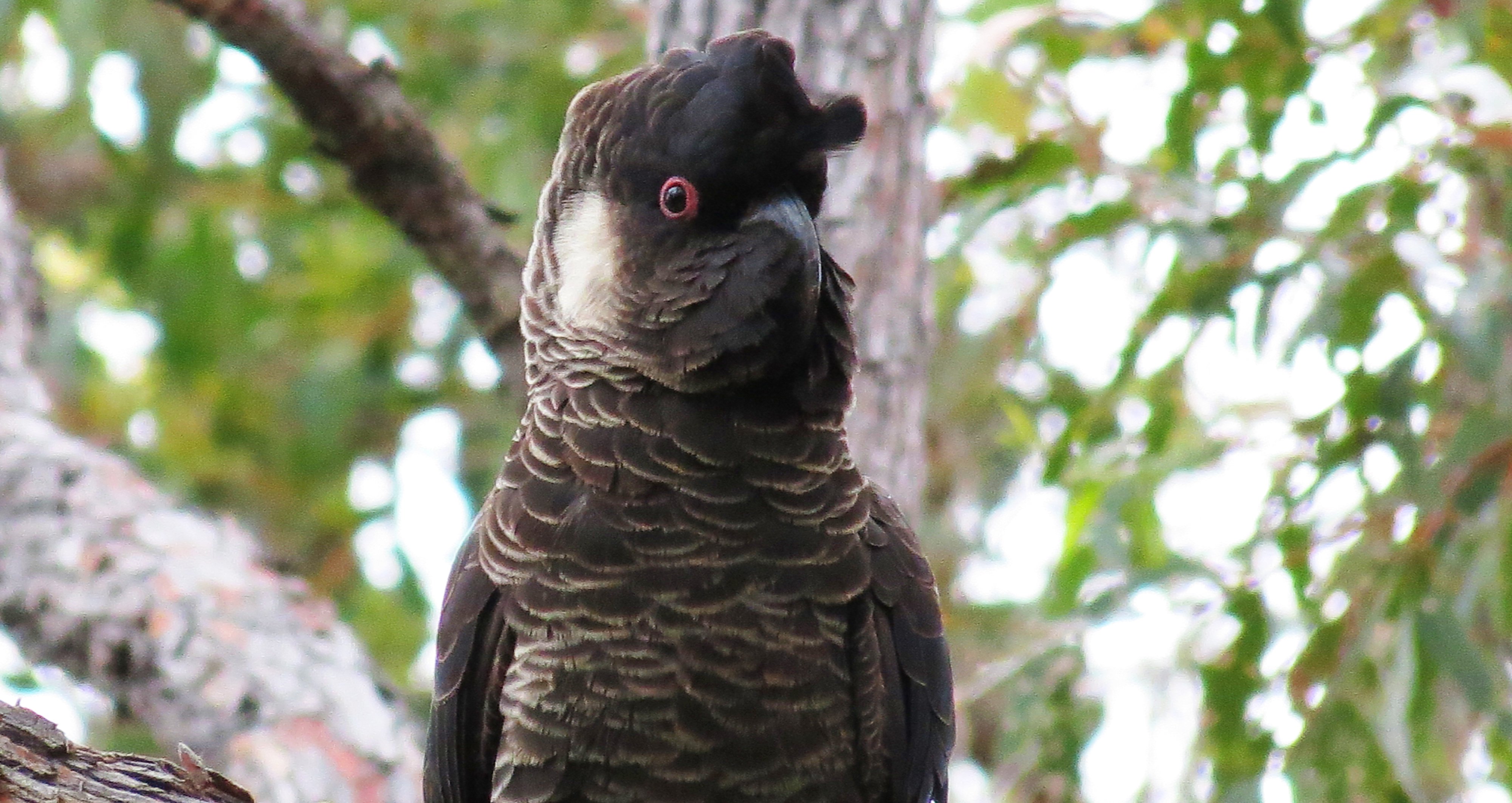
WHAT TO EXPECT
Travel through Western Australia with Limosa's own Aussie specialist Peter Taylor, whose home is in the tall timber country south of Perth.
Focusing on the continent's wild Southwest, this is a trip which will open your eyes to the long list of Australian endemic birds and with Baudin’s Black Cockatoo, Gilbert's Honeyeater and the ‘impossible to see’ Noisy Scrubbird we will look for up to 14 species that are found only in Western Oz.
Our visit is also timed to coincide with WA's spectacular displays of spring wildflowers, often acclaimed to be amongst the finest in the world. With two great boat trips and encounters with some of Australia's unique mammals, this completes a wonderful holiday Down Under.
In October, the Austral spring, the weather in southwestern Australia should be settling down nicely, with a Mediterranean-type climate around the coast: typically warm, dry and sunny but with occasional periods of cooler, cloudier conditions with some rain also possible. October temperatures at Perth typically range from 10-22°C/50-72F, although the steppe-like climate of the interior averages much hotter and drier, with plenty of sunshine. Rainfall is unlikely but, after the heat of the day and with clear skies, it can feel surprisingly chilly at night.
Some wonderful photographic opportunities on this holiday of birds, mammals, wildflowers and scenery.
BIRDS
170-200 species
MAMMALS
10-15 species
ACCOMMODATION
14 nights accommodation in Australia, ranging from 3-5-star hotels through to the more traditional (or best available in more remote spots) Aussie-style motels, lodges and cabins. All rooms have private facilities.
MEALS
All main meals are included in the tour price, commencing with dinner in Perth on Day 2 and concluding with lunch on Day 16.
WALKING
Easy. Gently paced walks, no more than a mile or two at any one time. Sturdy thornproof walking boots with stout corrugated soles for grip are recommended for this tour.
TRAVEL
Despite the end of many pandemic restrictions, it is still proving extremely difficult to predict future flight prices and schedules. As a result, we have taken the decision to continue to price our holidays as excluding international flights.
To keep the process as simple as possible, we are working very closely with a dedicated agent at Travel Counsellors, Sacha Barbato, who is essentially now our “in house” flight consultant.
Sacha will be able to advise you which flights we are recommending for each holiday, and he will be able to book these for you.
This will also sometimes give you the option to travel from a regional airport if you prefer.
GROUND TRANSPORT
By Toyota minibus or similar.
BOAT TRIPS
Our tour price includes two excellent boat trips.
The first is a short ferry crossing from Perth to Rottnest Island on a large ocean-going catamaran; the second is a half-day wildlife cruise over to Woody Island in the Recherche Archipelago, travelling out of Esperance on the Cetacean Explorer, a custom-built catamaran licensed to carry 48 passengers.
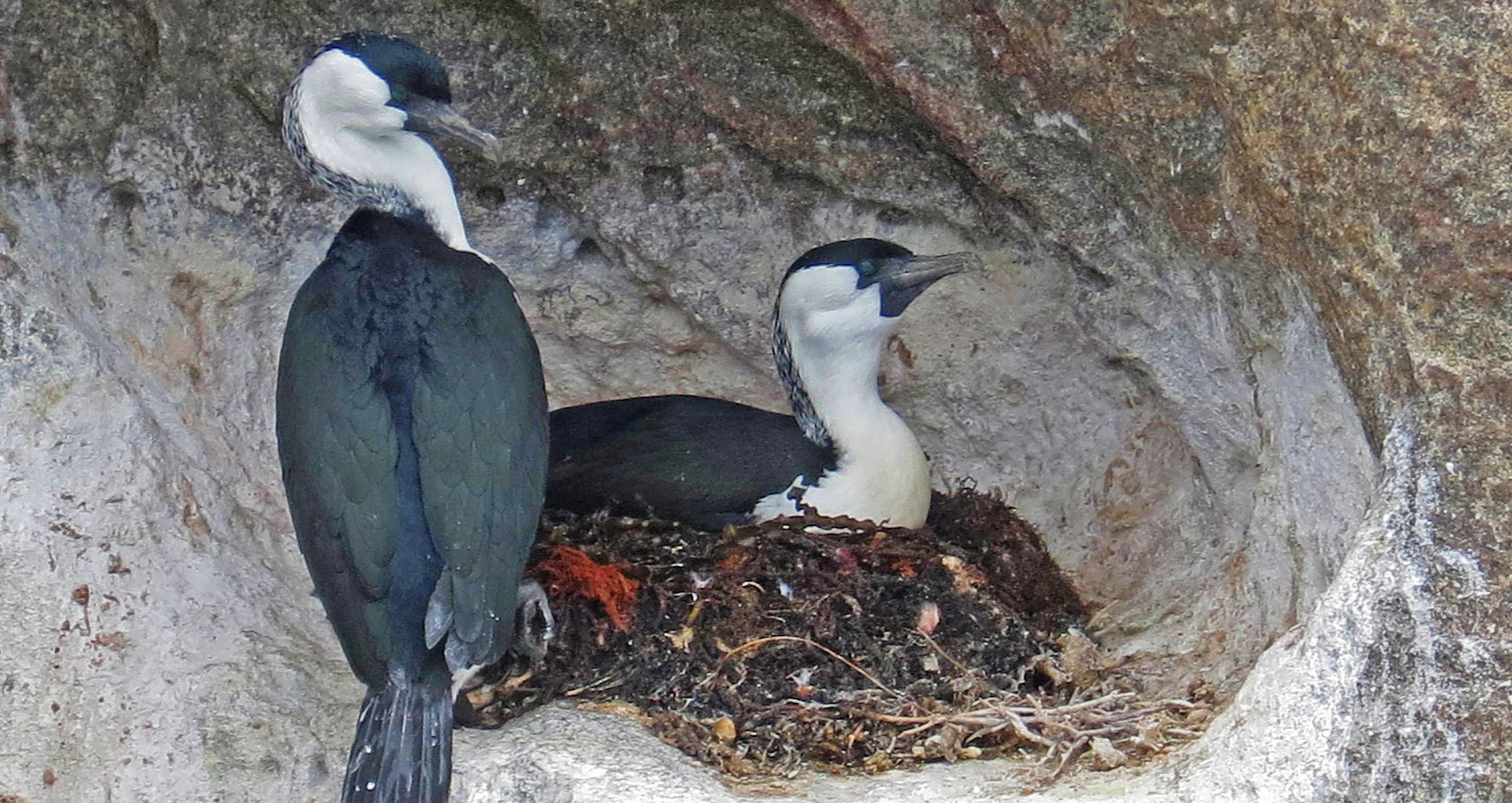
Tour Gallery
View a gallery of images for this tour below, click on an image to view as full size with caption
